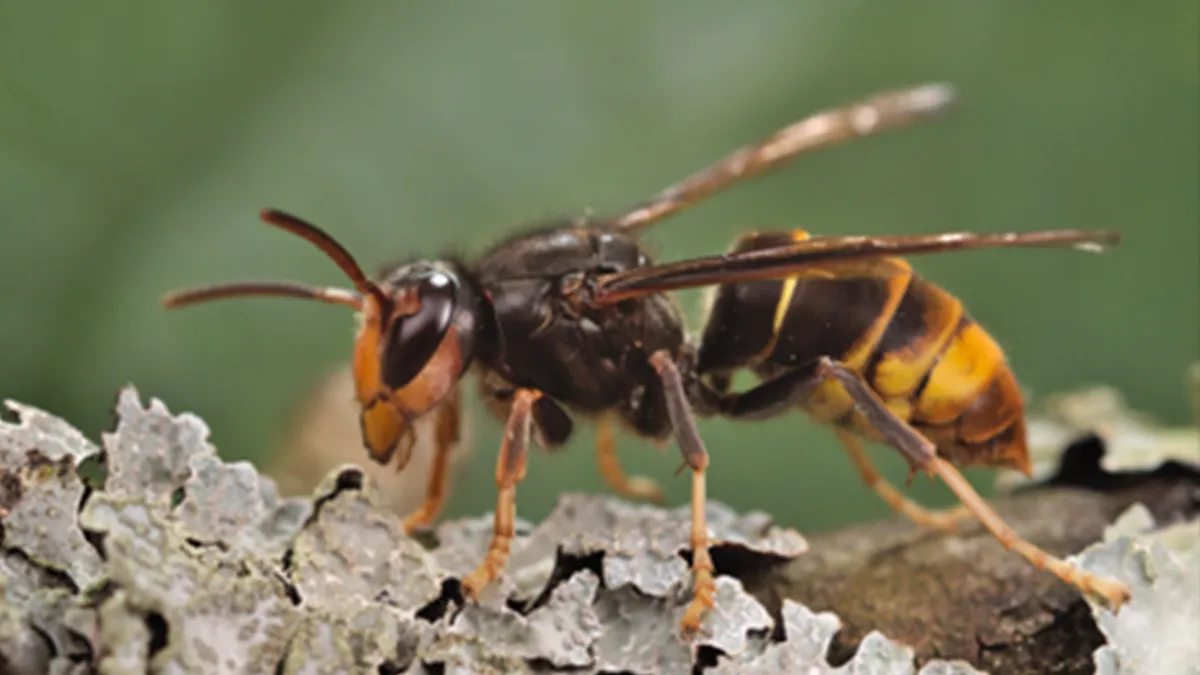Post by Atticus Pizzaballa on Aug 22, 2023 9:33:58 GMT -5
Invasive yellow-legged hornets spotted in US for 1st time
The invasive yellow-legged hornet, which preys on honey bees, has been spotted in Georgia for the first time.

Yellow-legged hornets have been spotted in the U.S. for the first time after a beekeeper reported an unusual insect in Savannah, Georgia, in early August.
The Georgia Department of Agriculture (GDA) announced last week (Aug. 15) that the invasive hornet species' arrival in the U.S. had been confirmed and that searches would be conducted in the area where it was found for signs of a nest.
"If established, this invasive species could threaten the native pollinators in our state and negatively impact our agricultural industry as a whole," Tyler Harper, Georgia's agriculture commissioner, said in a news conference.
Native to parts of Southeast Asia, the yellow-legged hornet (Vespa velutina) is a social wasp species and builds large paper nests that can contain an average of 6,000 workers, according to the statement. These egg-shaped nests are often found in trees.
The hornets threaten local ecosystems because they predate insects, including western honey bees (Apis mellifera) — which they can catch in flight.
"They are generalist feeders on insect prey," Keith Delaplane, the director of the UGA Honey Bee Program at the University of Georgia, told Live Science in an email. "But honey bees are a special concern because their managed apiaries (specifically each hive entrance and its steady traffic of foragers) constitutes the most concentrated source of prey the hornets encounter. They’re easy pickings."
Scientists have found two worker hornets, and experts are concerned there is an active nest, which would help the species become established. "Hence the urgency to trap and eradicate any incipient nests before they release next year’s queens," Delaplane said. "GDA inspectors are trapping and tracking hornets near the Savannah discovery site and hoping to find the nest."
Potential sightings of the yellow-legged hornet in Georgia can be reported online. However, a number of important pollinators can be mistaken for yellow-legged hornets. Experts recommend taking photographs, if it is safe to do so, of potential yellow-legged hornets from different angles, which would help them verify the insect's identity, according to the news conference and statement. One of their distinguishing features is the yellow coloration on the bottom half of the legs. They also have a distinctive yellow stripe on their fourth abdominal segment.
Yellow-legged hornets are a different species to Asian giant hornets (Vespa mandarinia), also known as giant northern hornets or "murder hornets" thanks to their painful sting. "It is a totally different animal," Delaplane said. They have "similar behaviors though, in that they prey on the western honey bee."
Yellow-legged hornets have become an invasive species in other parts of the world.
"It is concerning to hear that yellow-legged hornets have been reported from the USA. These hornets are a threat to honeybees but also wild pollinating insects too," Helen Roy, an entomologist and invasive species expert at the UK Centre for Ecology and Hydrology, told Live Science in an email.
But quick action could stop these invasive insects from getting too comfortable in the U.S.
"For the yellow-legged hornet it is possible for nests to be destroyed and so limit the chances of this invasive non-native species establishing and spreading," Roy added.
www.livescience.com/animals/bees-wasps/invasive-yellow-legged-hornets-spotted-in-us-for-1st-time?utm_term=D17DD51C-A273-43BA-BAD1-77888B2F2627&utm_campaign=368B3745-DDE0-4A69-A2E8-62503D85375D&utm_medium=email&utm_content=664B0FCF-0EF5-4DE9-9EEF-57029C477FF9&utm_source=SmartBrief



